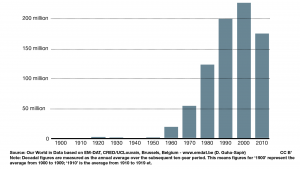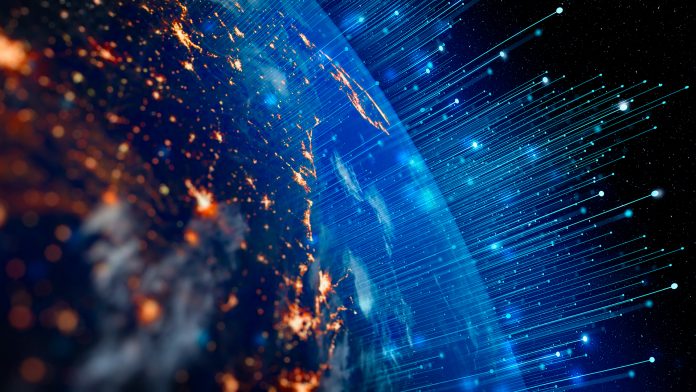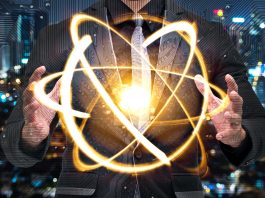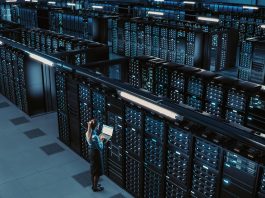Quantum software will severely impact our planet and demonstrate the substantial improvement of new quantum hardware compared to classical computers.
Let’s not forget that the computing power of classical hardware will stop growing as the transistor goes below 1nm, signifying entry into the Universe of quantum mechanics.
Even though the quality of physical qubits still needs to be substantially improved, we also need to start working on developing quantum algorithms. The latter is required for basically any scientific and societally relevant issues.
The computer science and software engineering community are heavily reliant on the progress of the physics community, and to some extent, it is lagging in terms of research and concepts. In addition, Quantum Computing logic (QC Logic) is complex and may seem counter-intuitive at first glance.
Quantum advantage cannot be achieved in isolation with hardware only – quantum software is required, too. One aspect we need to understand is that when we execute a quantum algorithm on a classical computer, we must ensure that an explicit parallel version of the quantum algorithm or that the simulator used can parallelise the code.
The parallelism is implicit using a physical qubit, but when using perfect qubits on classical computers, we must fully parallelise the quantum algorithm. Otherwise, we reduce the problem to a very small size without relevance to real-world problems.
Earth Observation applications are gathering vast amounts of data
Satellite Image Classification (SIC) is a key tool for informed decision-making using Earth Observation applications.
These applications are used for urban planning, the management of natural disasters, and energy supply. Currently, 4,852 active satellites are orbiting the Earth that generate an ever-increasing amount of data, estimated to be around 150 TB per day.1
SIC is critical for rapidly analysing natural hazards, whose magnitude and frequency drastically increase due to climate change.
For example, only 39 natural disasters were detected between 1900 and 1960, while 396 were identified in 2019. The subsequent impacts on human life, cost and environmental damage are dramatic.
As shown in Fig. 1, there were low levels of environmental crises in 1900. However, this increased to more than 200 million in 2000.
Deep Learning algorithms work to map building damage and surface change of such disasters rapidly. Yet, this process remains highly dependent on ground observations and low-altitude pictures generated by devices like drones.
Those images substantially reduce the execution time from several days to a matter of minutes.2
Therefore, developing, implementing, and testing efficient and scalable quantum software is still needed. This will be the only way huge amounts of images can be processed at a larger scale and with less overall computing time.

Developing larger and more complex quantum software
A concrete example of decreasing the training time of intelligent quantum software is to develop larger and more complex statistical models such that more images can be processed using more information embedded in the image.
Those results will substantially improve the image analysis accuracy, which is compared to classical image classification methods.1,3
This advantage is partly due to the probabilistic nature of quantum computations, its implicit parallel execution, in addition to the capacity of random quantum circuits to leverage non-linear features.3
Interestingly, a study from the European Patent Office revealed that patent filings of space applications with quantum software have increased by more than 400% over the past five years.
Secure Communication and Earth Observation are the two primary uses of quantum software in space. Hybrid (classical quantum) image classification methods have been investigated in the literature.
It was established that the proof of concept of QC for Earth Observation improved the model accuracy from 93.63% to 94.73%.4 This was achieved by changing the classical layer to a quantum convolutional one in the neural network.
We could also talk about the flight of a rocket to the planet Mars. Flights like these take around eight months and need continuous control of all the flight parameters, especially when passing by a planet on its way to Mars.
More examples can be given, but it is essential that, given the limitations of classical computer hardware, we need to emphasise the development of quantum algorithms much more. Space is just one example in which quantum software is active, but it could also be used in chemistry, finance, and others.
References
- Sebastianelli, D. A. Zaidenberg, D. Spiller, B. L. Saux, and S. Ullo, “On circuit-based hybrid quantum neural networks for remote sensing imagery classification,” IEEE Journal of selected topics in applied earth observations and remote sensing, vol. 15, pp. 565–580, 2022
- J. Sublime and E. Kalinicheva, “Automatic post-disaster damage mapping using deep-learning techniques for change detection: Case study of the Tohoku tsunami,” Remote Sensing, vol. 11, no. 9, p. 1123, 2019
- M. Henderson, S. Shakya, S. Pradhan, and T. Cook, “Quanvolutional neural networks: Powering image recognition with quantum circuits,” 2019
- D. A. Zaidenberg, A. Sebastianelli, D. Spiller, B. L. Saux, and S. L. Ullo, “Advantages and bottlenecks of quantum machine learning for remote sensing,” 1 2021









